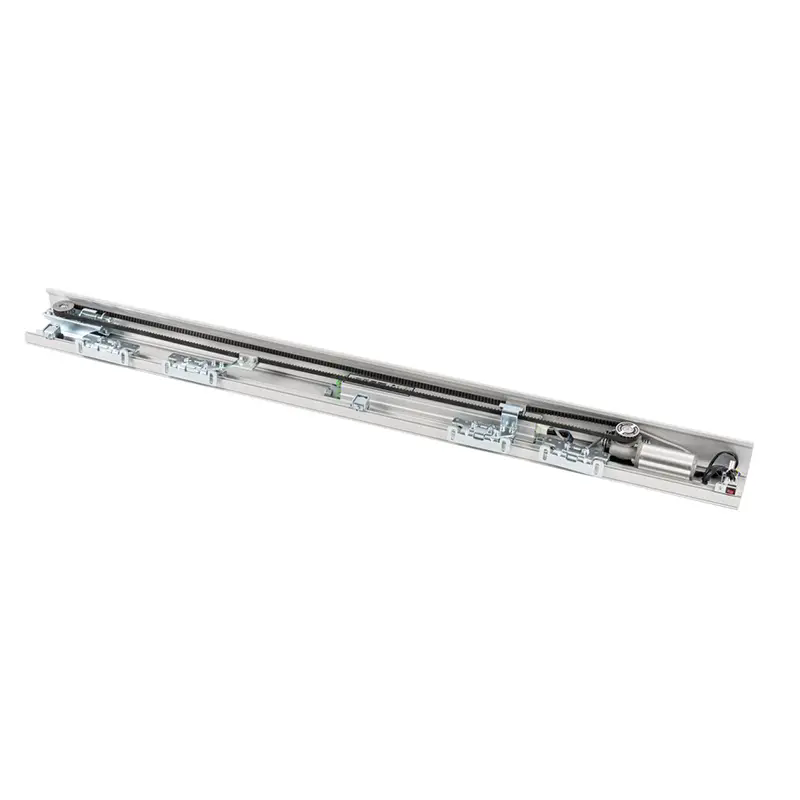Why Are Automatic Sliding Doors the Future of Modern Entryways?
2024-11-20
In an era where convenience and efficiency drive innovation, automatic sliding doors have become a hallmark of modern design and functionality. From commercial buildings to residential spaces, these doors offer seamless entry and enhanced aesthetics. But why are automatic sliding doors increasingly favored in diverse settings?
Let’s dive into their features, benefits, and the reasons behind their growing popularity.
What Are Automatic Sliding Doors?
Automatic sliding doors are mechanized entry systems designed to open and close without manual effort. Using motion sensors, push buttons, or remote controls, they glide open smoothly, providing hands-free access. These doors are often seen in malls, airports, hospitals, and high-end residential spaces.
Why Choose Automatic Sliding Doors?
1. Convenience:
- They offer effortless entry, especially for people carrying heavy loads, individuals with disabilities, or parents with strollers.
2. Space Efficiency:
- Sliding doors don’t swing open, saving space in compact entryways or crowded areas.
3. Aesthetic Appeal:
- Sleek and modern, they enhance the visual appeal of any building.
4. Energy Efficiency:
- Many models come with insulation features to minimize heat loss or air leakage, improving energy savings.
5. Hygiene:
- In places like hospitals or food processing units, touchless operation reduces the spread of germs.
What Are the Key Benefits of Automatic Sliding Doors?
1. Enhanced Accessibility:
- They comply with accessibility standards, making buildings more inclusive.
2. Increased Security:
- Many doors are equipped with advanced locking systems, motion detectors, and remote control options to ensure security.
3. Durability and Longevity:
- Built with robust materials and designed for frequent use, they can withstand heavy foot traffic.
4. Customizable Options:
- Available in a variety of sizes, materials, and finishes to match specific architectural needs.
5. Improved Traffic Flow:
- Automatic operation ensures smooth movement, ideal for areas with high foot traffic.
Where Are Automatic Sliding Doors Most Commonly Used?
1. Commercial Spaces:
- Shopping malls, offices, and retail outlets use these doors to create a welcoming and professional entryway.
2. Hospitals and Clinics:
- Hands-free doors promote hygiene and allow for easy access in emergency situations.
3. Airports and Transport Hubs:
- Efficient entry and exit points help manage the movement of large crowds.
4. Residential Applications:
- High-end homes incorporate automatic sliding doors for a luxurious and futuristic touch.
5. Industrial Facilities:
- Used in warehouses or factories to facilitate the movement of goods and personnel.
How Do Automatic Sliding Doors Enhance Safety?
1. Obstacle Detection:
- Advanced sensors prevent the doors from closing on objects or individuals.
2. Emergency Functionality:
- Many models feature emergency opening systems to ensure evacuation during power outages or other emergencies.
3. Controlled Access:
- Integration with access control systems restricts entry to authorized personnel only.
4. Safety Glass:
- Often made with tempered or laminated glass to reduce risks of breakage.
Why Are Automatic Sliding Doors a Smart Investment?
Investing in automatic sliding doors offers long-term benefits that justify their cost:
- Energy Savings: Their efficient operation helps reduce heating and cooling costs.
- Modern Appeal: They increase the value and prestige of properties.
- Reduced Maintenance: High-quality models require minimal upkeep, making them cost-effective over time.
Conclusion
Automatic sliding doors are more than just entry systems—they’re a fusion of technology, convenience, and design. As buildings evolve to prioritize accessibility, energy efficiency, and aesthetics, these doors are becoming a key feature in modern architecture.



